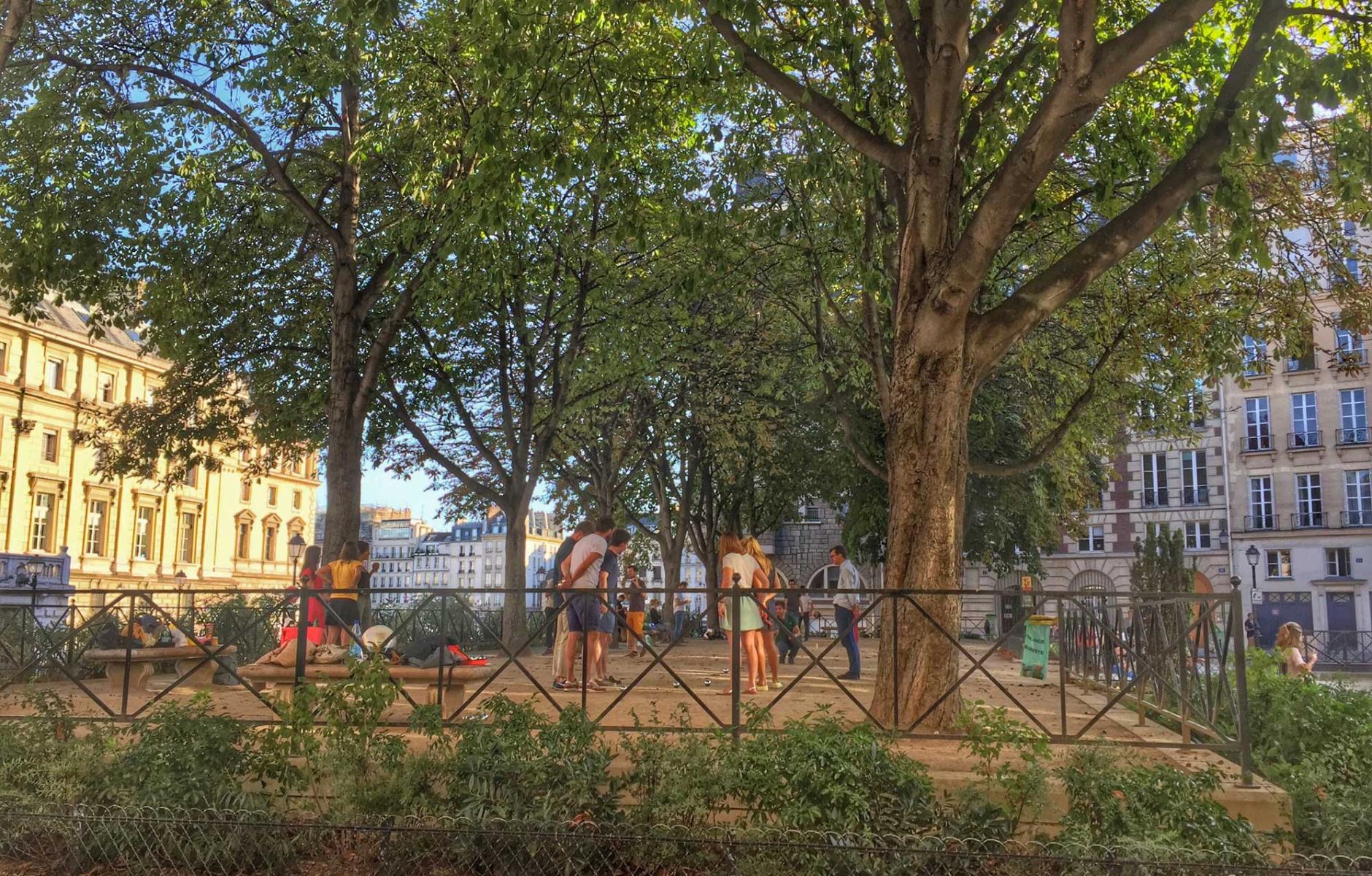
Fighting loneliness with parks and third places
I was struck by a recent essay in Time about the growing epidemic of loneliness in America. It drew a clear correlation between isolation and the decline of real-life social connections, particularly in third places—those informal gathering spaces like coffee shops, libraries, and parks. As someone passionate about building community through thoughtful design, I couldn’t help but reflect on how these spaces have evolved and their importance in fostering connection and combating loneliness.
The third place: A critical community connector
Sociologist Ray Oldenburg introduced the concept of the "third place" in his influential book, The Great Good Place. He described these informal gathering spaces as the "anchors of community life"—places that spark connection, creativity, and civic engagement. Think about your favorite coffee shop or the bustling neighborhood bookstore. It’s not just where you grab a latte or the latest bestseller—it’s where you run into neighbors, strike up conversations, and feel a part of something bigger than yourself.
Even before recent disruptions to daily life, these spaces were under siege. Longer work hours, the rise of digital interactions, and the closure of local businesses chipped away at their presence. Downtowns—the beating hearts of many communities and home to countless third places—have seen significant shifts in how they are used and valued.
The disappearance of third places is more than just an inconvenience; it’s a crisis for community resilience. Without these spaces, people become more isolated, and the social fabric of our neighborhoods starts to fray. Imagine a neighborhood without its gathering spots—it's not just quieter, it’s lonelier. These spaces provide a rhythm to life, creating opportunities for planned and spontaneous connections that sustain our collective well-being.
The loneliness epidemic across all age groups
Loneliness is not confined to any single age group; it permeates all demographics, albeit in varying degrees. A 2022 survey conducted across 16 countries found that feelings of loneliness tend to decrease with age. Nearly 60 percent of young adults between 18 and 24 reported negative effects on well-being due to loneliness, while around 22 percent of respondents aged 65 and older reported the same.
In the United States, Generation Z (ages 18-22) has been identified as the loneliest generation, with 79 percent reporting feelings of loneliness. This is a paradoxical situation where, despite being hyperconnected digitally, young adults experience profound social isolation. Social media, while offering convenience, often fails to replicate the depth and richness of face-to-face interactions.

Older adults are not immune to this epidemic. The World Health Organization notes that 1 in 4 older adults experience social isolation, which can lead to serious health consequences, including increased risks of heart disease, stroke, and dementia. For these groups, the absence of accessible and welcoming spaces compounds their isolation.
Parks as social hubs
While some third places face challenges, parks remain a consistent source of connection and well-being. Public green spaces offer a refuge for physical activity, mental health, and casual gatherings. These open-air environments support both social and solitary activities, making them invaluable as adaptable spaces for everyone.
Cities with robust park systems have demonstrated the enduring value of these spaces. Parks serve as the “third place” for those who might not have access to traditional indoor gathering spaces, proving their value as both community hubs and quiet havens. During busy weekday mornings, you might see joggers or yoga classes taking advantage of these shared spaces. On weekends, families and friends gather for picnics or impromptu soccer games. Parks create opportunities for engagement that span generations and cultural divides.
Moreover, parks offer an egalitarian appeal. Unlike some third places that require you to make a purchase or abide by certain social norms, parks are free and accessible to all. This makes them a unique and invaluable part of our urban fabric, fostering inclusion and fairness. Public green spaces remain vital for addressing broader social issues, including mental health and social isolation. These parks exemplify how thoughtfully designed spaces can become lifelines for communities.

Revitalizing downtowns and third places
The question remains: how do we revive our downtowns and reinvigorate third places so they can continue to serve as vital community connectors? Here are a few ideas:
- Hybrid third places: Rethink traditional gathering spots by focusing on accessible, community-oriented spaces like:
- Neighborhood pocket parks: Small, walkable areas with seating, water features, and space for local vendors or performances, designed to invite casual and planned interactions.
- Library parks: Green spaces integrated with library facilities, offering outdoor reading areas, lending kiosks, and venues for talks or small cultural events.
- Community gardens: Shared gardening spaces where residents can cultivate plants while fostering connections through collaborative activities and educational workshops. These hybrid spaces could also include modern touches like Wi-Fi hotspots to appeal to those working remotely.
- Greening the urban core: Let’s bring nature into the heart of our cities. Linear parks, green rooftops, and tree-lined streetscapes can make downtowns more inviting and livable while addressing environmental concerns. These green features also contribute to public health by improving air quality and providing cooling effects in dense urban areas.
- Activating public spaces: Events like outdoor markets, live performances, and yoga classes can draw people back to shared spaces and create a sense of community vibrancy. Regular programming can turn once-overlooked plazas into lively hubs of activity.
A blueprint for resilience
Ray Oldenburg’s concept of the third place is as relevant today as when he first wrote The Great Good Place. The enduring importance of these spaces in combating loneliness and fostering belonging cannot be overstated. Parks and other third places, when thoughtfully designed and supported, can form the backbone of resilient, connected communities.
As planners and advocates, we must rethink how we design and prioritize these spaces. It’s not just about building something functional; it’s about creating places that invite people to linger, connect, and form the kinds of bonds that make communities thrive.
Key takeaways
- Flexibility is key. Both third places and parks must adapt to evolving needs, offering opportunities for both physical and digital connection.
- Parks are not a luxury. They’re essential public health infrastructure.
- Downtowns need reimagining. Hybrid spaces, green integration, and public activation are critical to their recovery.
Building back connection
We have a unique opportunity to rethink what it means to create shared spaces. By reimagining downtowns, expanding parks, and supporting hybrid third places, we can design environments that heal, connect, and inspire. Imagine walking into a space that feels alive with the hum of conversations and laughter, a place where everyone feels they belong. Let’s ensure our built environment reflects the connected, resilient society we want to be.
Start small in your own neighborhood—plant a tree, organize a park clean-up, or host a community gathering in a shared space. Every effort helps build stronger connections where you live.
Note: This article originally appeared on the PlaceMakers blog, Placemaking Journal.




